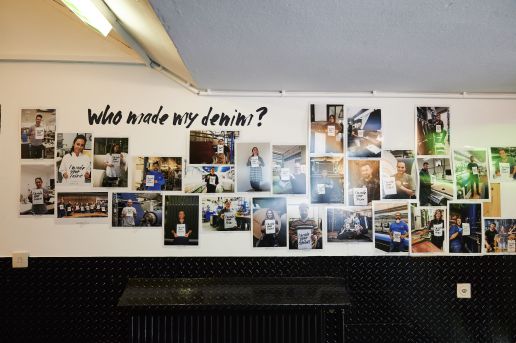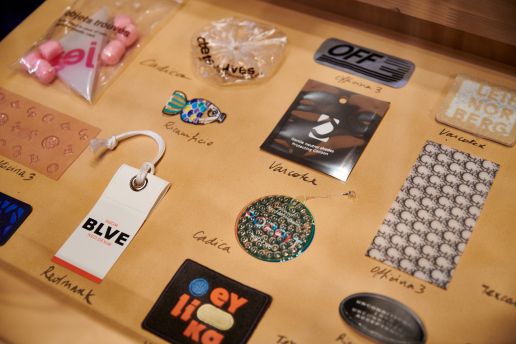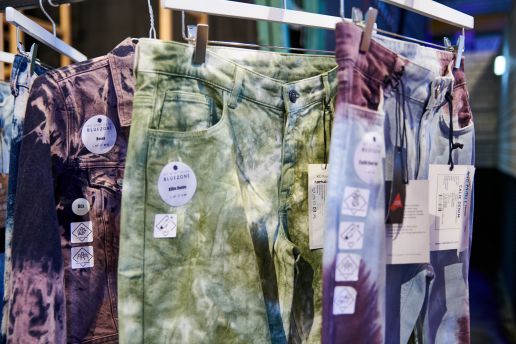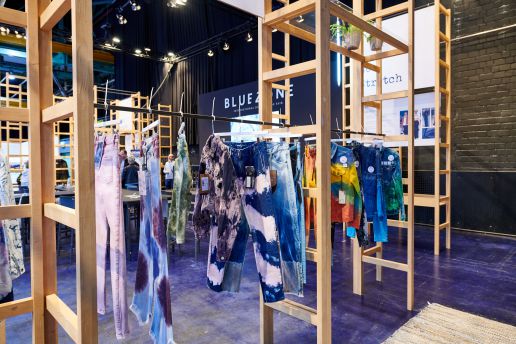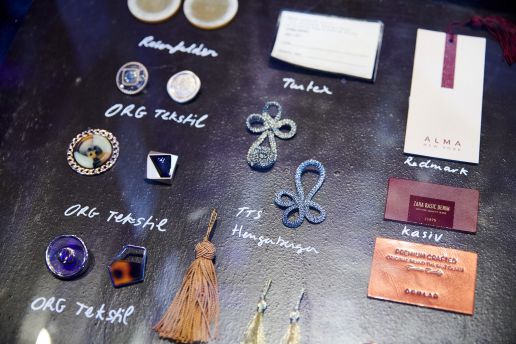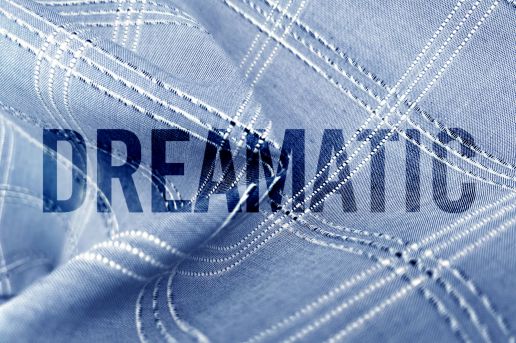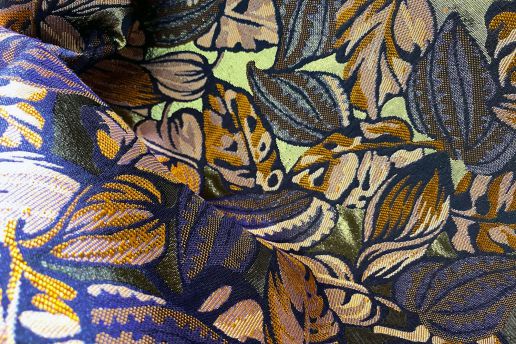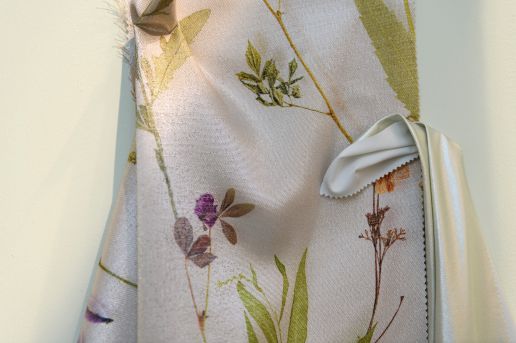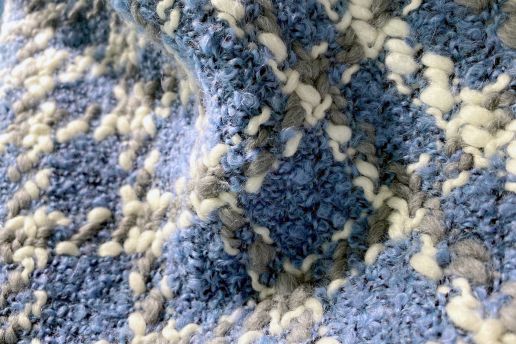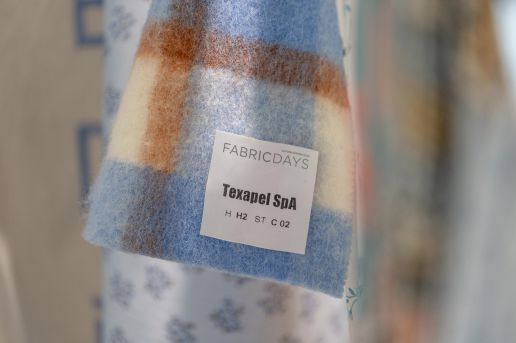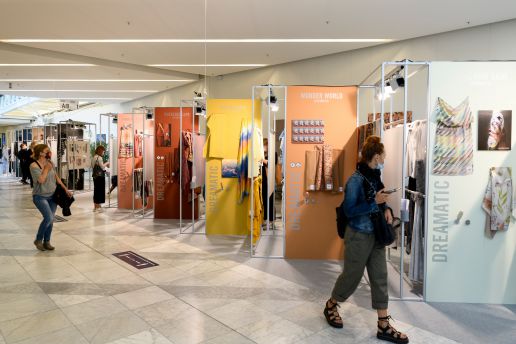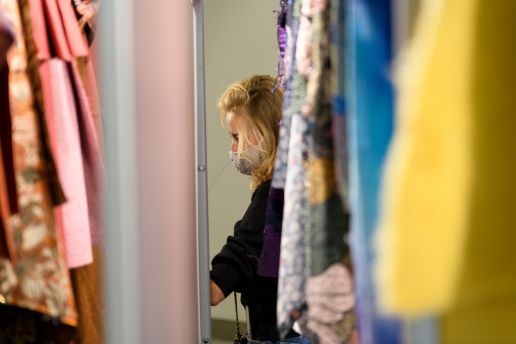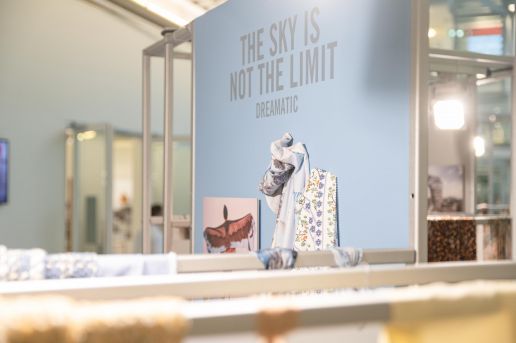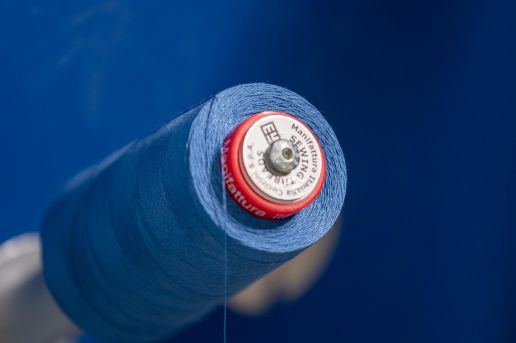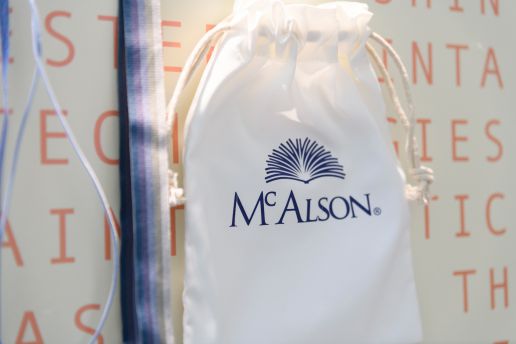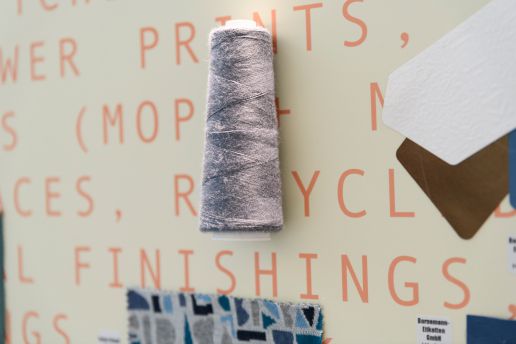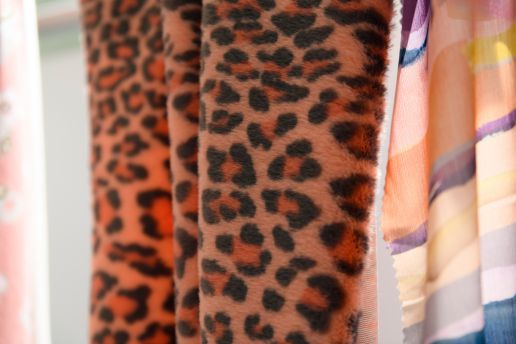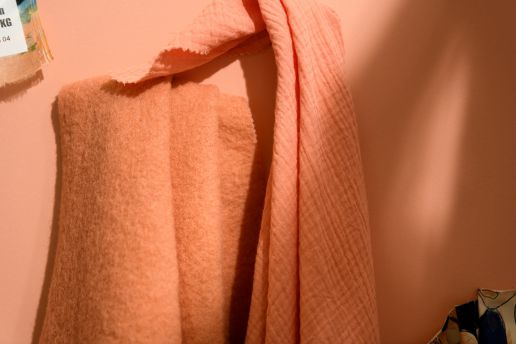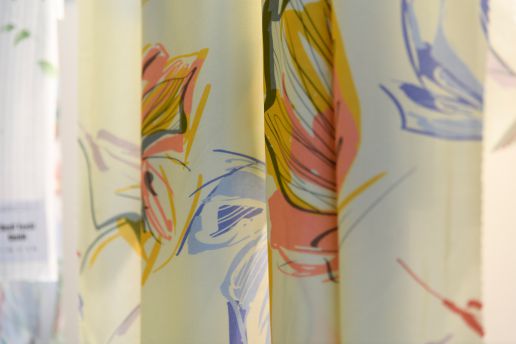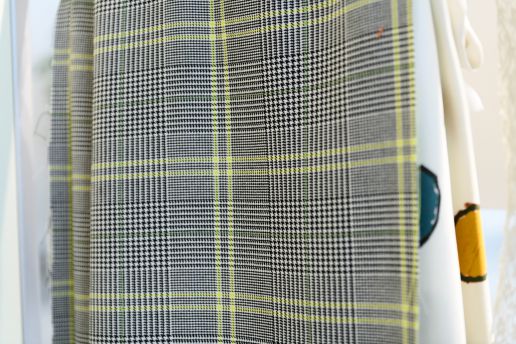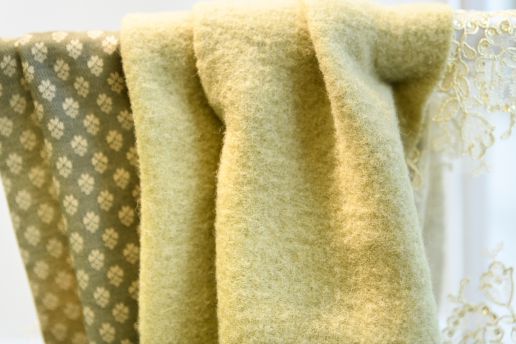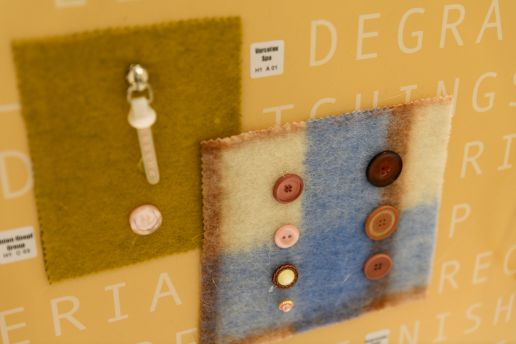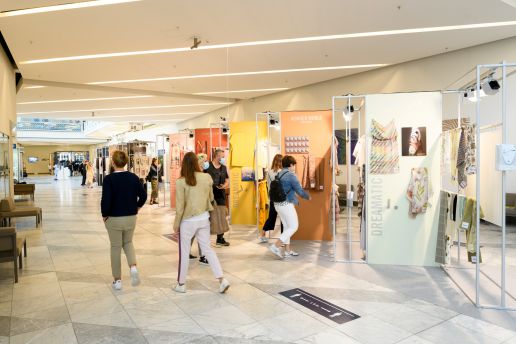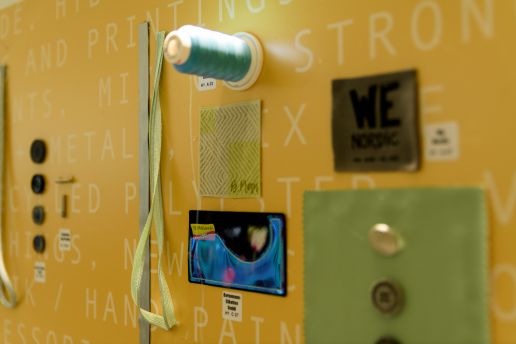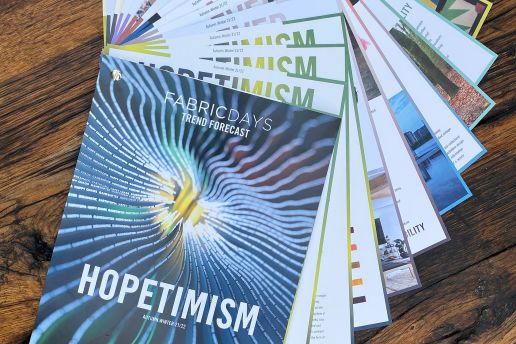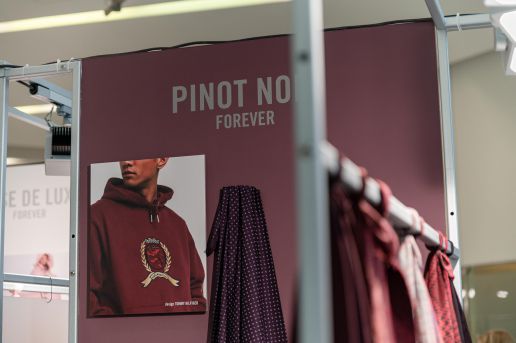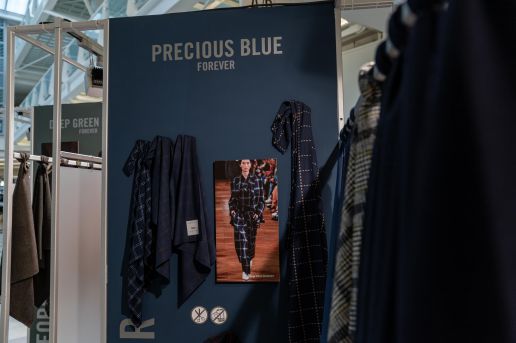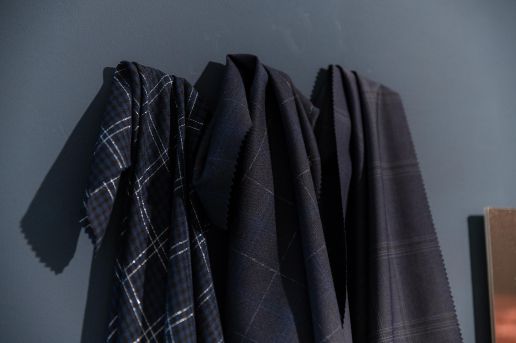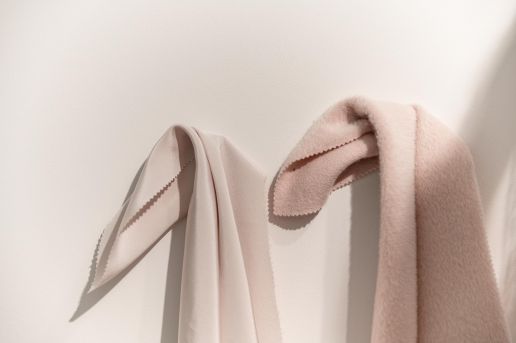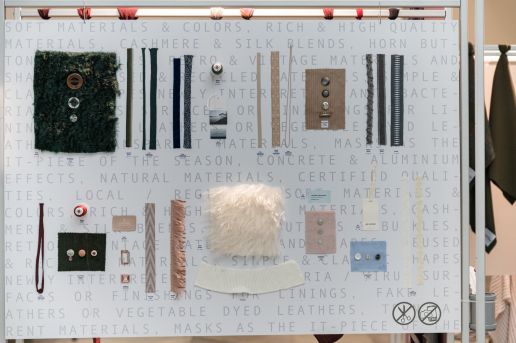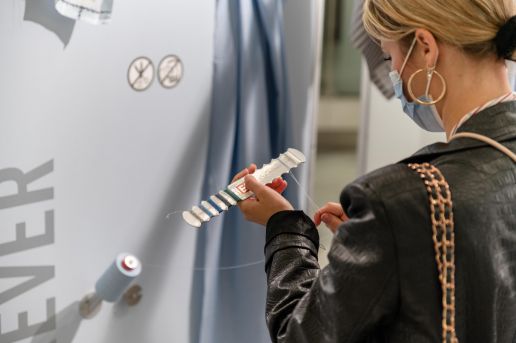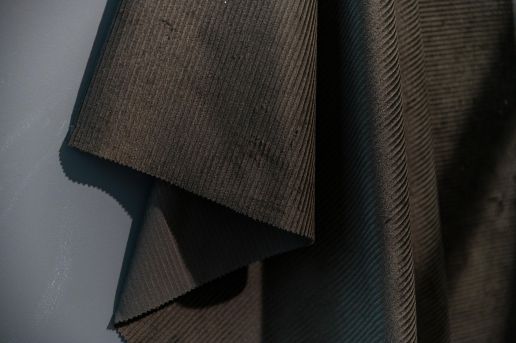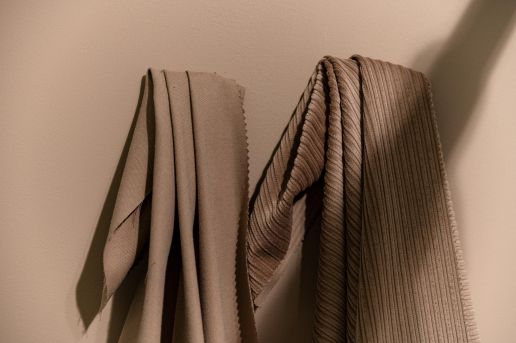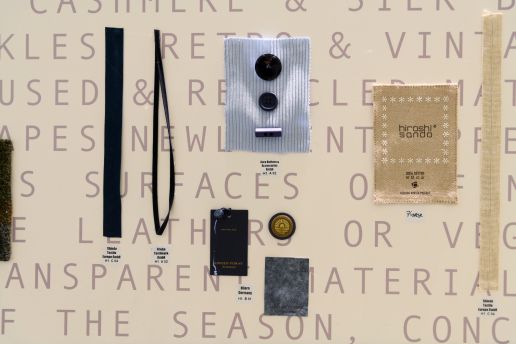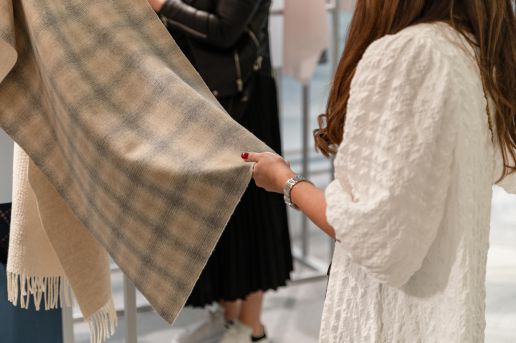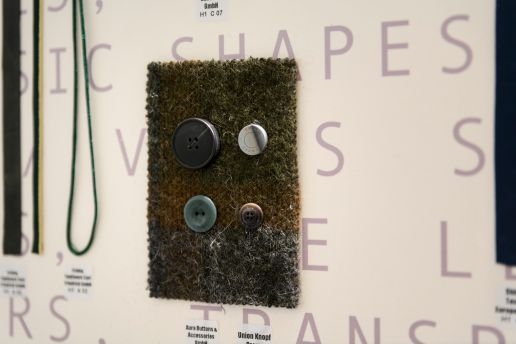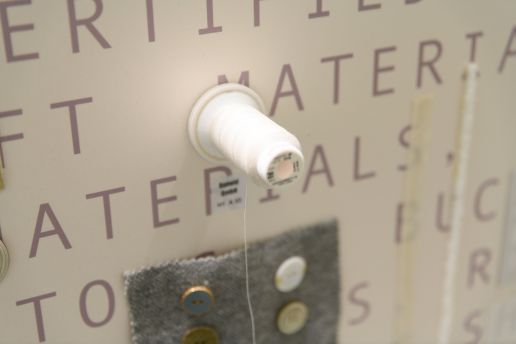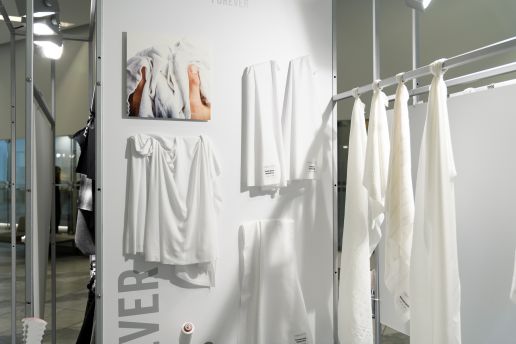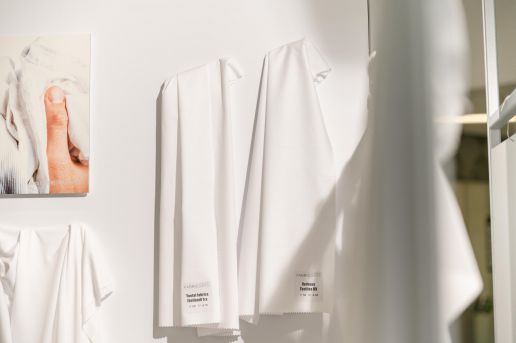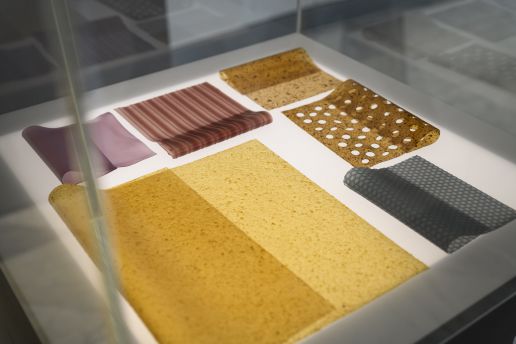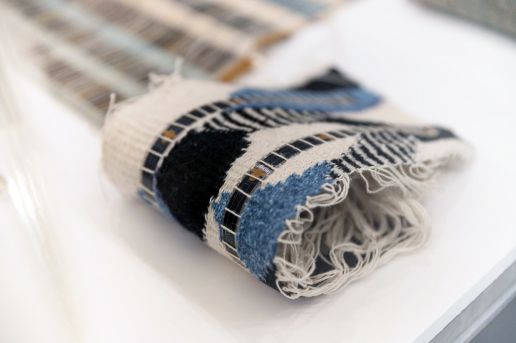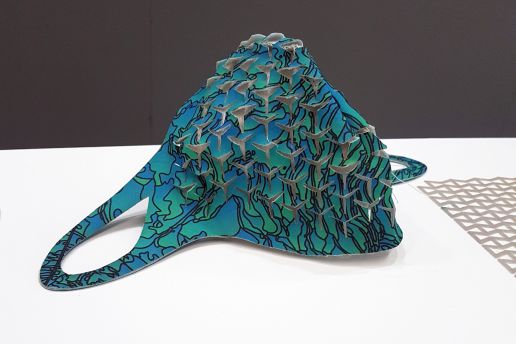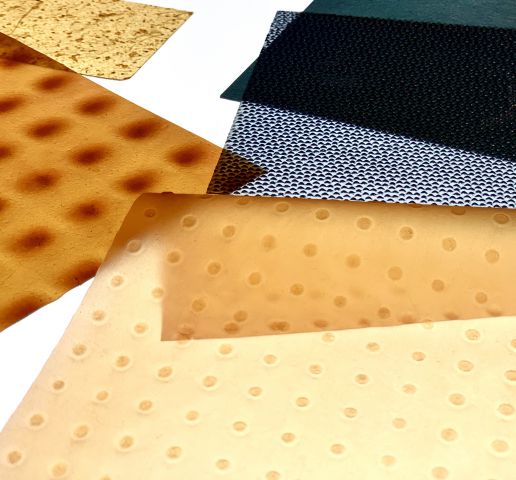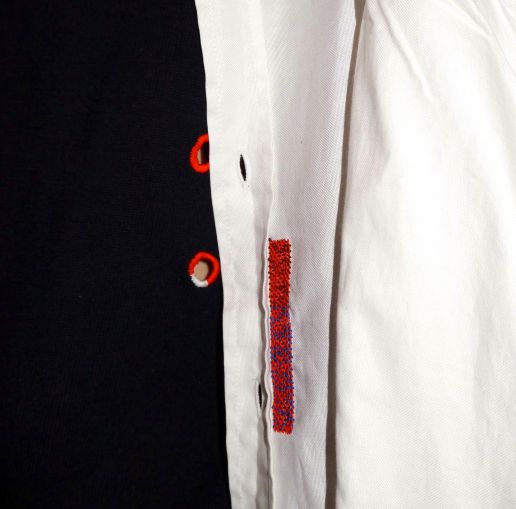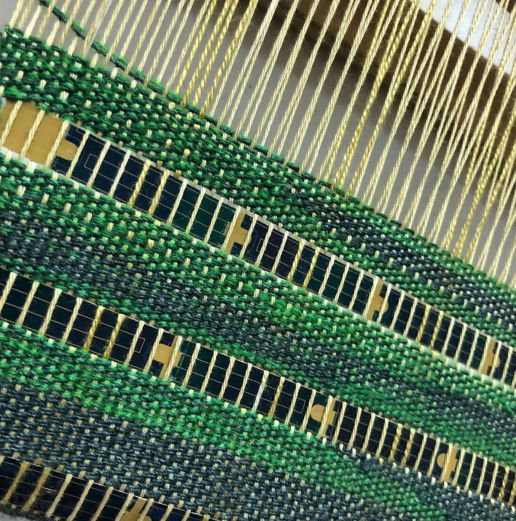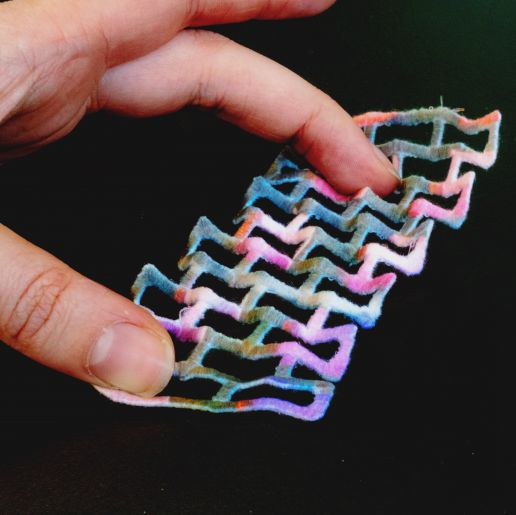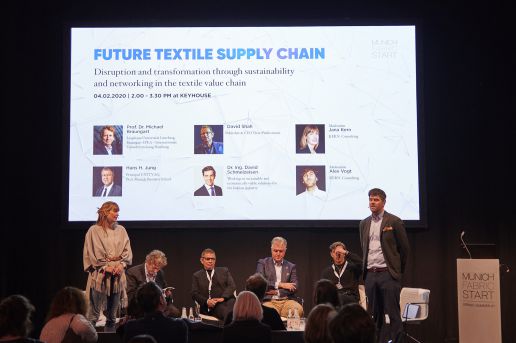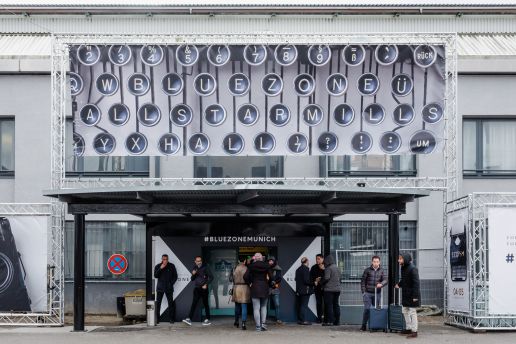Sustainability
AW 21/22 Trend Analysis #2: Dreamatic
The Autumn.Winter 21/22 Trend Forecast by MUNICH FABRIC START presents HOPETIMISM, this season’s title which stands for hope and optimism – it is a mindset that explores new ways and perspectives. Its spirit brings our industry together during a very challenging time to design innovative products and processes that fulfil new market needs. The MUNICH FABRIC START Trend Team presents the 5 trend themes for AW21/22: FOREVER, DREAMATIC, EARTHTOPIA HAPPY CHAOS & GAMESHIFTER.
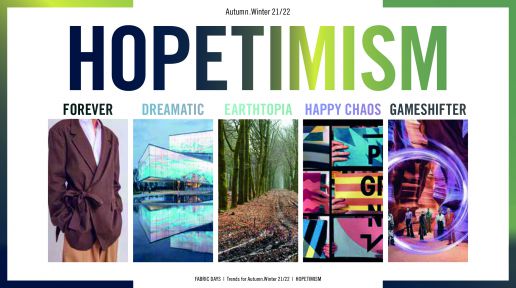
HOPETIMISM AW21/22 Trend Themes
FOREVER stands for semi-elegant, cosy and classic home & all day wear.
DREAMATIC creatively stages a progressive and urban casual fashion.
EARTHTOPIA shows a strong consciousness for function and tradition.
HAPPY CHAOS is an optimistic playground for sports, diy, craftsmanship and improvisation.
GAMESHIFTER combines futuristic high-tech innovation with flashy glamour.
We focus next on the trend theme DREAMATIC:
HOPETIMISM TREND THEME #2: DREAMATIC
DREAMATIC is a word creation combining DREAM and DRAMATIC – the theme is characterised by longing and melancholy, merged with a positive outlook. Here you will find the progressive poets and visionaries who actively seek solutions to current challenges. These digital humanists are dreamy and imaginative, but always have a connection to reality. With this attitude, worlds can be moved.

Blue is the focus here and represents the fluidity and movement of water and air. Contrasted by delicate natural tones such as hibiscus or vicuna. The distinct look of this trend comes from the faded primary colours and degradé tones, which can be found in shades of blues and reds.
For the full AW21/22 Trend Forecast which includes Pantone, Coloro and Archroma colour codes combines a mix of fashion trends, sustainability and innovation alongside current inspirations in art, culture, architecture and design, order your copy here.
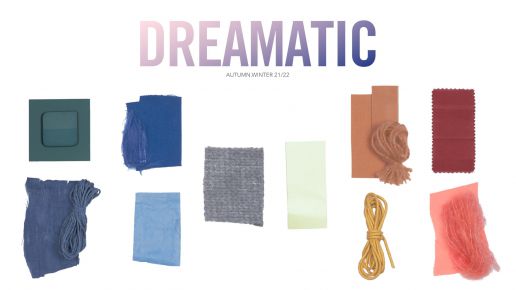
When it comes to fabrics and materials, we encounter provocative, punk batiks and pastel fades, which are combined with classics such as a simple herringbone coat or elegant pumps. Classic elements in delicate colours with highly technical 3D patterns are decorated in a charming way and produced with a high attention to detail and craftsmanship. Romantic floral prints are found in combination with shiny, reflective, technical or transparent materials.
Take a look through the fabric and accessories highlighted in the DREAMATIC trend theme showcased in the HOPETISIM Trend Forum at Fabric Days, 1-3 September 2020 in Munich.
The full Autumn.Winter 21/22 Trend Forecast is available to order from our website. For further trend information in the following categories:
Emotions and Moods
Fabrics and Materials
Fashion and Classic Styles
Technology and Science
Thrivability Values as innovative sustainable impulses
Covid-19 influences for a future in times of a pandemic
Order the full AW21/22 Trend Forecast here.

OPENING TIMES
2. MARCH 2021 · 9:30 – 18:30
3. MARCH 2021 · 9:30 – 18:30
4. MARCH 2021 · 9:30 – 16:00
LOCATION
MOC Munich | Halls 1 – 4 Groundfloor
Lilienthalallee 40
Germany, 80939, Munich
AW 21/22 Trend Analysis #1: Forever
The Autumn.Winter 21/22 Trend Forecast by MUNICH FABRIC START presents HOPETIMISM, this season’s title which stands for hope and optimism – it is a mindset that explores new ways and perspectives. Its spirit brings our industry together during a very challenging time to design innovative products and processes that fulfil new market needs. The MUNICH FABRIC START Trend Team presents the 5 trend themes for AW21/22: FOREVER, DREAMATIC, EARTHTOPIA HAPPY CHAOS & GAMESHIFTER.

HOPETIMISM AW21/22 Trend Themes
FOREVER stands for semi-elegant, cosy and classic home & all day wear.
DREAMATIC creatively stages a progressive and urban casual fashion.
EARTHTOPIA shows a strong consciousness for function and tradition.
HAPPY CHAOS is an optimistic playground for sports, diy, craftsmanship and improvisation.
GAMESHIFTER combines futuristic high-tech innovation with flashy glamour.
We start with the first trend theme of FOREVER:
HOPETIMISM TREND THEME #1: FOREVER
FOREVER stands for durability, timeless and high-quality materials. It revolves around the question of what is really important to us. Inspired by the new home office life that continues to accompany us, we mix athleisure with classics. As corona purists, we wear rediscovered basics and classics – favourite pieces that we already have in our wardrobe.
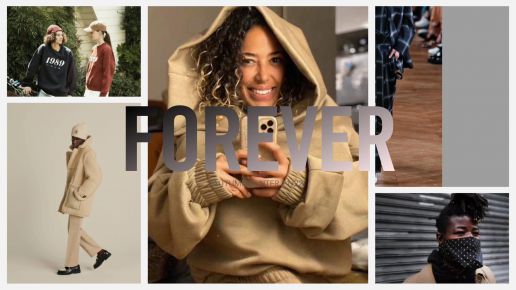
The FOREVER colour palette consists of timeless and classic colours that have rational, but also emotional nuances. A strong light to dark theme with deep blue, dark loden green, washed out black, medium grey and neutral beige forms the basis. These are complemented by refreshed classics such as delicate rosé, light blue and a full bordeaux tone.

For the full AW21/22 Trend Forecast includes Pantone, Coloro and Archroma colour codes combines a mix of fashion trends, sustainability and innovation alongside current inspirations in art, culture, architecture and design, order your copy here. Take a look through the fabric and accessories highlighted in the FOREVER trend theme showcased in the HOPETISIM Trend Forum at Fabric Days, 1-3 September 2020 in Munich.
The full Autumn.Winter 21/22 Trend Forecast is available to order from our website. For further trend information in the following categories:
Emotions and Moods
Fabrics and Materials
Fashion and Classic Styles
Technology and Science
Thrivability Values as innovative sustainable impulses
Covid-19 influences for a future in times of a pandemic
Order the full AW21/22 Trend Forecast here.

OPENING TIMES
2. MARCH 2021 · 9:30 – 18:30
3. MARCH 2021 · 9:30 – 18:30
4. MARCH 2021 · 9:30 – 16:00
LOCATION
MOC Munich | Halls 1 – 4 Groundfloor
Lilienthalallee 40
Germany, 80939, Munich
From Trash to Treasure by Youyang Song
Dutchman Simon Angel has found a talented designer whose innovation makes it possible to create textiles from recycled bioplastics. The curator of SUSTAINABLE INNOVATIONS presented these and three other developments during the FABRIC DAYS.
„More and more, we are moving towards an era of adhocracy. Transferring this into the material and textile world: Materiality and comfort will experience a comeback”, explains Simon Angle in our interview with him.
An example of this is presented here as part of the SUSTAINABLE INNOVATIONS:
FROM TRASH TO TREASURE BY YOUYANG SONG
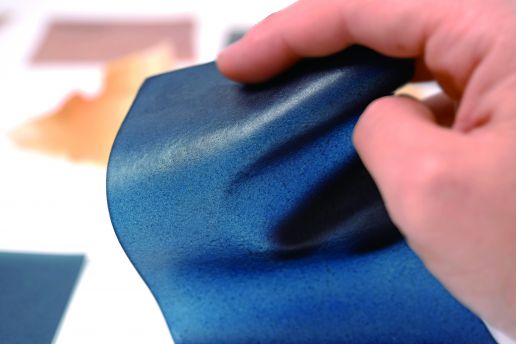
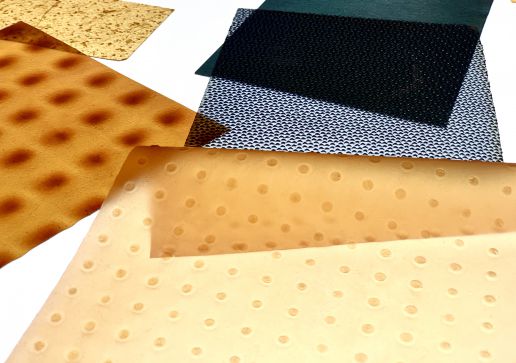
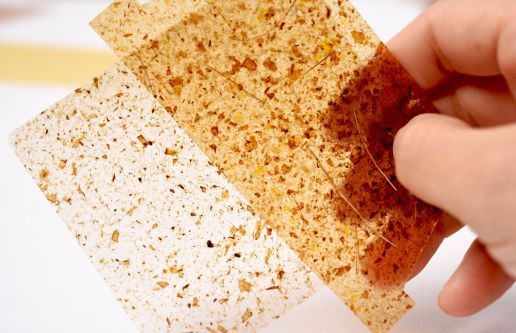
How can innovative products be created without using new resources? How can we stop growing mountains of waste? Use the old to create the new: The designer and materials researcher Youyang Song has set herself the goal of helping to develop an ecosystem consisting of purely biodegradable materials. Handbags made of banana peel, lampshades made of soy milk – the designer processes organic waste into new recyclable materials. This results in products that can be returned to the natural cycle at the end of the product life cycle.
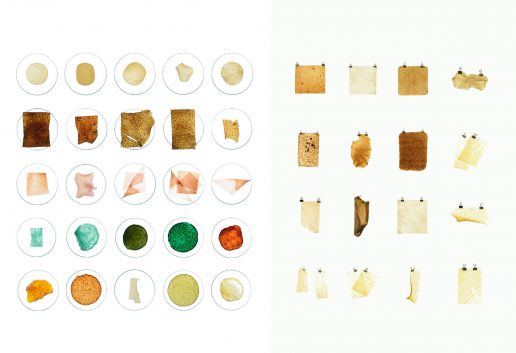
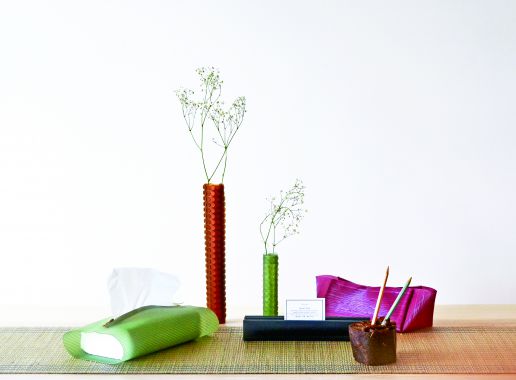
„Our goal is to establish a circular economy regarding the materials and follow the sustainable development guidelines to create our products.“
Youyang Song
Song has developed the “Cooking new materials” technique, in which fruit peels or soy milk are mixed with a natural binding agent. “APeel” is the name of the soft, innovative material created by this process. The natural product is also waterproof and robust like real leather, smells fruity, has a natural texture and is completely biodegradable. Protecting the environment in style: With her project, Song wants to show that environmentally friendly products can be not only practical, but also aesthetic and stylish.
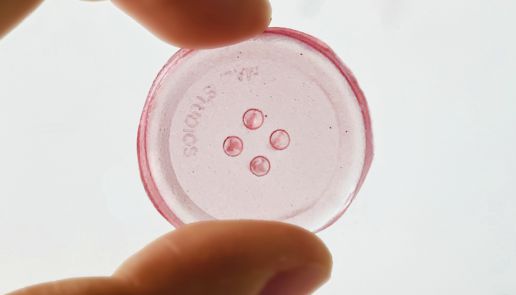
Perfect Imperfection by Studio Mend
FABRIC DAYS presented futuristic innovations of international manufacturers. Besides, Sustainable Innovations curator Simon Angel introduced innovative developments of young designers in the SUSTAINABLE INNOVATIONS forum.
“Rethinking old traditions and adding a contemporary note to them can create innovation – sometimes you don’t have to come up with something entirely new to be innovative”, states Simon Angle in our interview with him.
An example of this “traditional innovation” is:
PERFECT IMPERFECTION BY STUDIO MEND
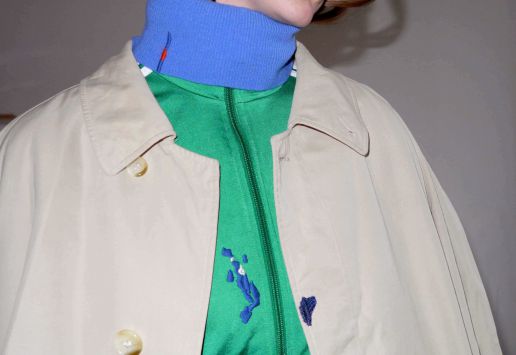
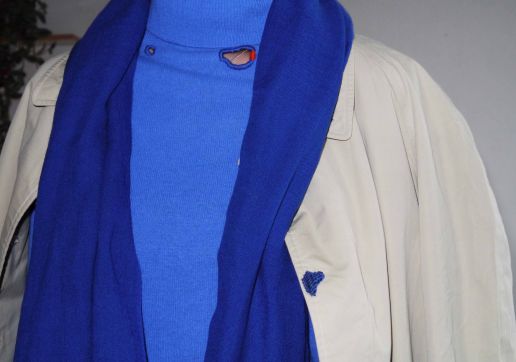
A new pair of jeans for 29,99€, a t-shirt for 7,99€. Constantly changing trends, synthetic fabrics and inferior quality: Since fast fashion conquered the world in the 1960’s, new clothes are available everywhere and at all times. What is broken is thrown away and what is no longer in fashion lies unused in the cupboard. More than two million tonnes of textile waste are generated annually in the European Union alone. When did our relationship to clothing change in such a way? This question was asked by the young fashion designer Sunniva Amber Flesland. She founded Studio Mend in 2019 to bring back the emotional and material value of what we wear.
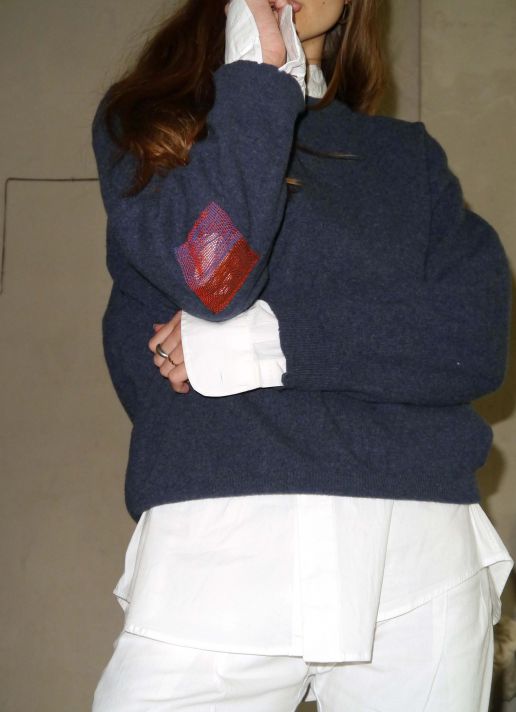
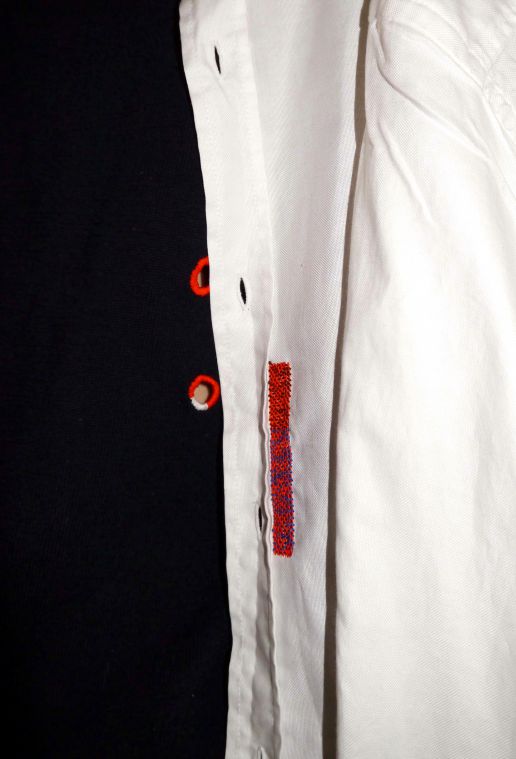
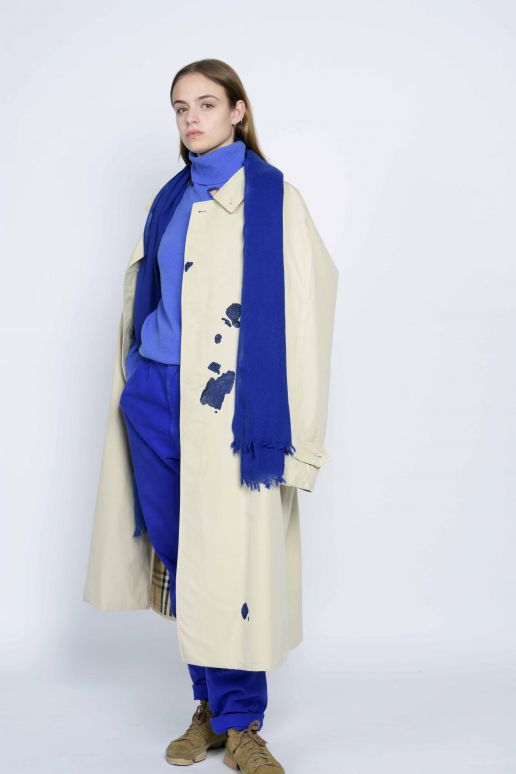
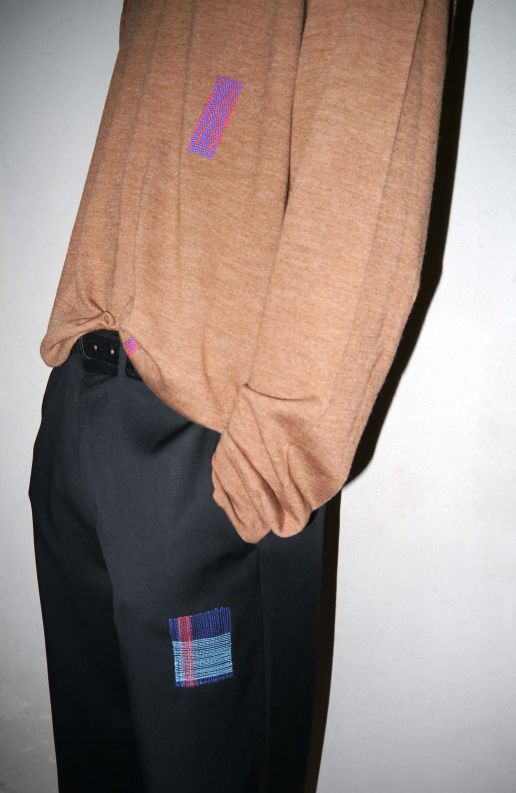
“I am excited by raw material, old crafts and traditions, beauty, and looking for potential where it’s not easily seen.”
Sunniva Amber Flesland
Appreciate, repair, refine: At Studio Mend, traces of wear and tear from through the lifespan of the garments are repaired in a very special way. Island Weave, Edge Mend, Pinstripe Patch, Crossover Stitch: The customer can choose between these four carefully developed technical styles to make his or her damaged favourite piece whole again. In combination with individual colour designs, valued and unique pieces are created. The acceptance of transience and imperfection – this is the basic principle of the Japanese philosophy Wabi Sabi, which served as inspiration for Flesland. Instead of hiding faults, they are celebrated as signs of an eventful life. Visibly and ingeniously, the artist creates valuable, aesthetic and unique pieces as a statement for a better fashion world.

Solar Self by Pauline van Dongen
SUSTAINABLE INNOVATIONS Autumn.Winter 21/22 #2
Every season, Simon Angel is searching for the four most futuristic SUSTAINABLE INNOVATIONS.
These four sustainable developments have been presented at FABRIC DAYS – one of them being this textile innovation that combines technology and fashion in a unique way:
SOLAR SELF by PAULINE VAN DONGEN
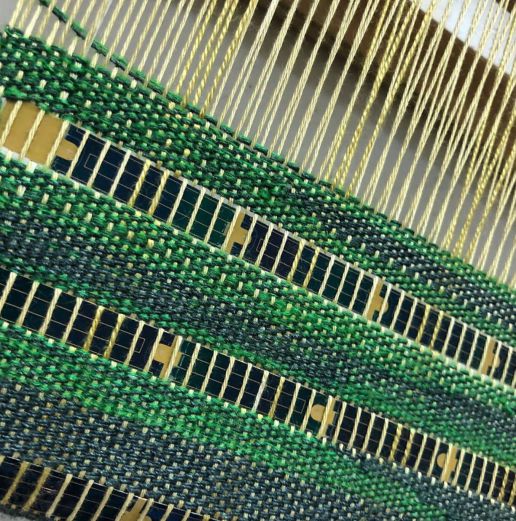
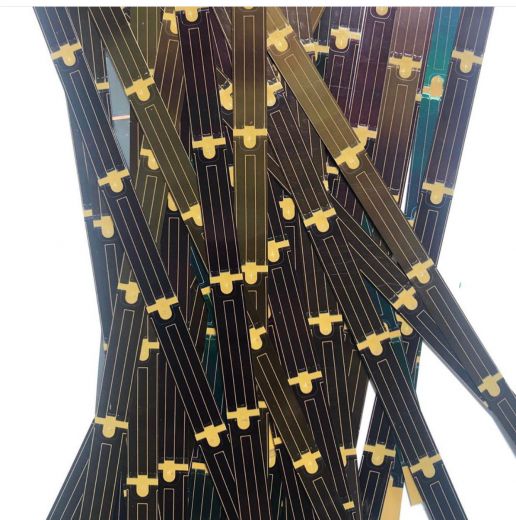
A dress to recharge your smartphone? What sounds like utopia is already tangible reality. For their project “Zonnestof” (“Sun Dust”), Pauline Van Dongen and Maaike Gottschal have developed a woven textile with thin, flexible solar cells, thus creating new aesthetic qualities and material properties. A play on colour, texture and transparency: By combining the solar cells with different yarns and various weaving patterns and techniques, a wide range of textiles can be produced.
“The creative process invites people to participate, to explore their dreams and wishes as well as to show what role solar energy can play in their daily lives. All participants become owners of the project through their contribution and thus part of a larger movement.”
Pauline van Dongen
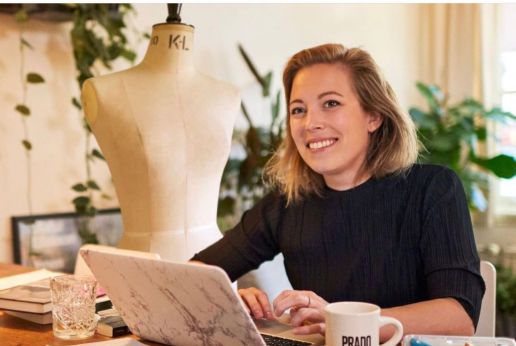
But the Dutch fashion designers and researchers are not only interested in embedding technology in fashion. The initiators of the project are much more interested in the social experience of working with solar fabrics and wearing technology on the body. In workshops, the project invites the participants to create their own piece of “solar design” and weave a sustainable future. Instead of seeing nature and technology as opponents, Van Dongen and Gottschal want to make technology something that goes without saying. And it is not only fashion that can gain unprecedented added value from solar fabric: The textile can also be used in architecture or interior design, for new transport concepts and in public spaces as well as for events and festivals.
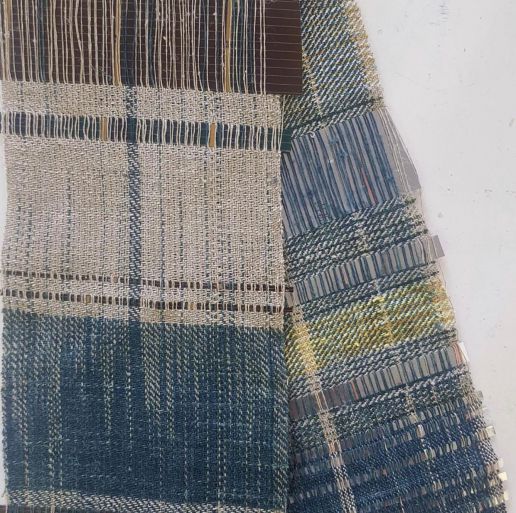
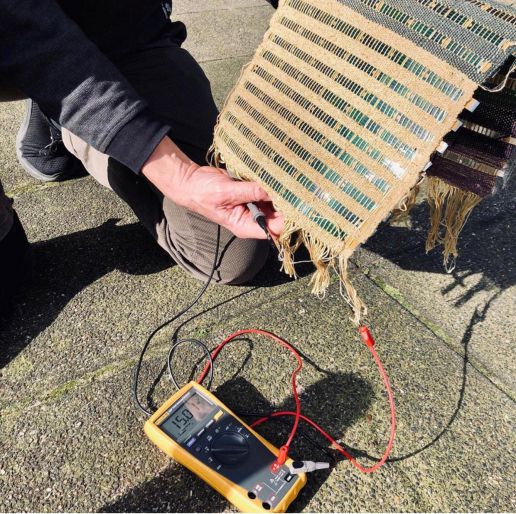
Living Material by Iris Bekkers
SUSTAINABLE INNOVATION Autumn.Winter 21/22 #1
SUSTAINABLE INNOVATIONS curator Simon Angel presented four developments for the season Autumn.Winter 21/22 at FABRIC DAYS at the beginning of September. The Dutchman is always on the search for interesting young designers, outstanding innovations and the latest novelties in the textile world.
In our latest interview with him, he stated: “With the Sustainable Innovation forum, we present the near future and showcase what already is possible.”
Let us now present you the first of this season’s SUSTAINABLE DEVELOPMENTS:
LIVING MATERIAL BY IRIS BEKKERS

Doesn’t fit anymore, doesn’t fit properly: Many of our favourite pieces of clothing lose their shape after a short time and are shipped directly to the nearest garbage dump. Textiles that adapt to individual body shapes and external conditions could reform the fashion and textile industry.
To create such textiles, product designer Iris Bekkers uses auxetic materials in her project “Moving Structures”, i.e. stretchable materials that can adapt their structure to their surroundings. As part of her final project at Eindhoven University of Technology, she has developed a special face mask that not only adapts to different face shapes, but also adapts its filter function to the environment and is very breathable.
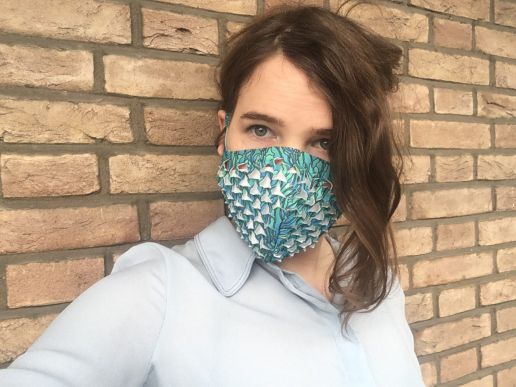
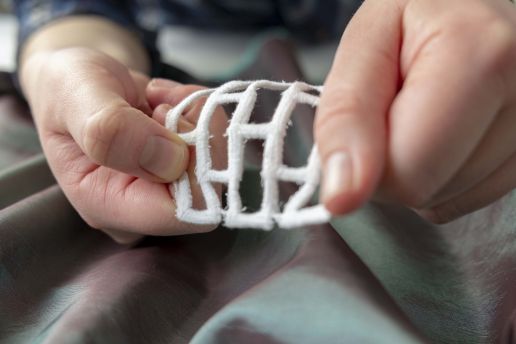
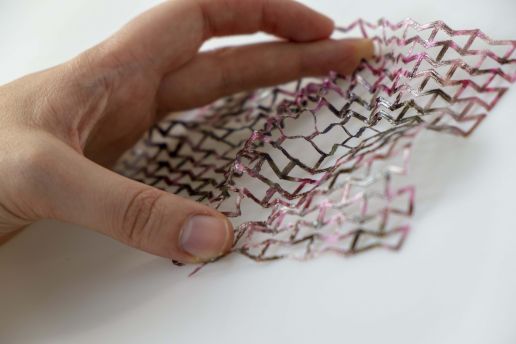
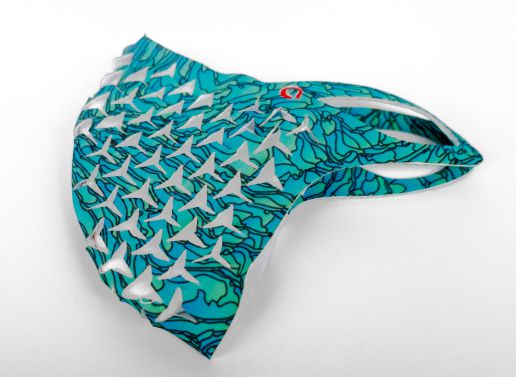
More comfort, longer wearing time, less waste: Due to their geometric structures, auxetic materials become thicker when stretched, rather than thinner like most fabrics. The potential of such fabrics ranges from jackets that adapt to the seasons and can therefore be worn in summer and winter, to shoes that change their flexibility and stability as required. Bringing the material to life: For her designs, Iris Bekkers not only thinks about the material and its texture, but also about the context in which the fabrics are used and enjoyed. Only in this way can her designs combine man and nature.
“The auxetic samples are the start and inspiration for a range of products that can adapt and transform themselves, functioning optimally in different circumstances. The potential for adaptability results in more value, more function and a reduction in the quantity of materials and products necessary.”
Iris Bekkers
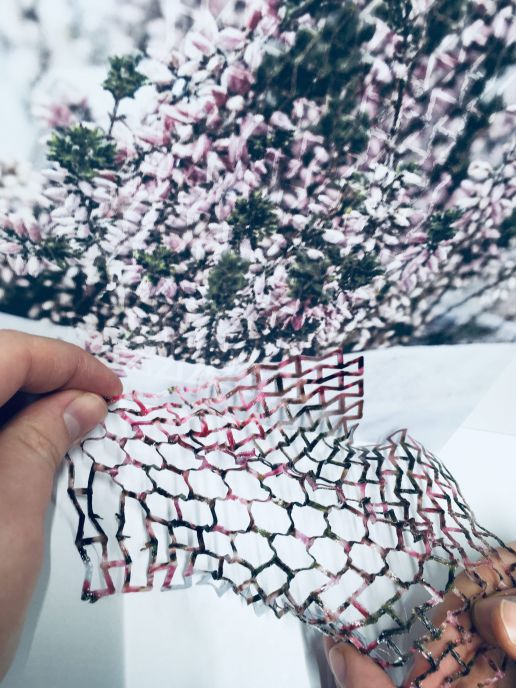
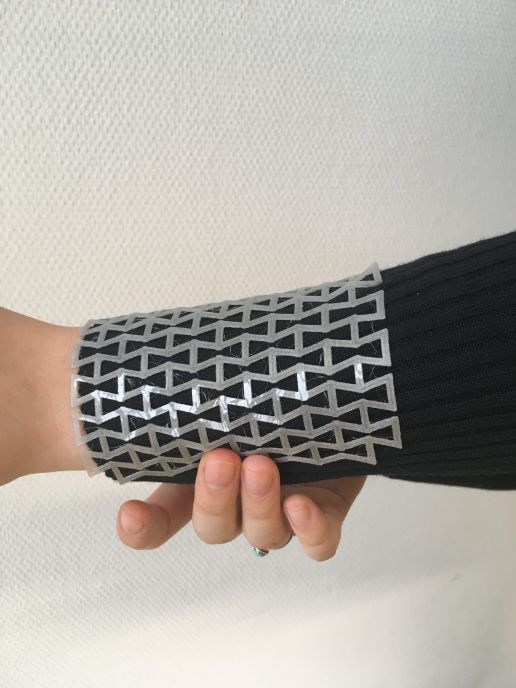
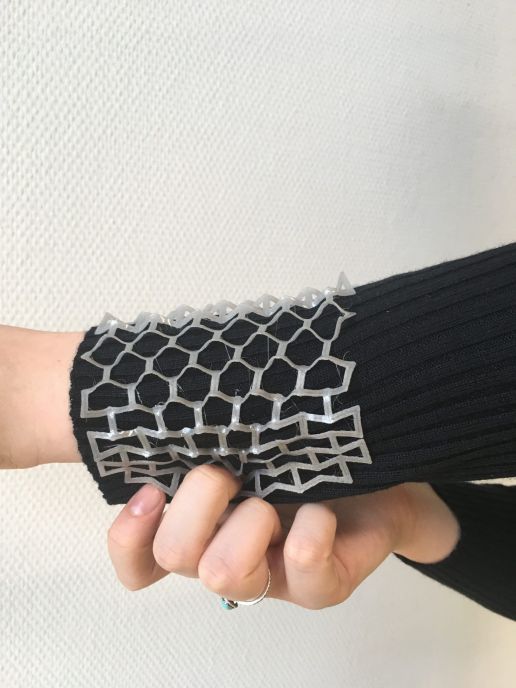
Plan Your Visit To FABRIC DAYS
BACK TO BUSINESS WITH FABRIC DAYS
Business, inspiration and industry exchange – this is what awaits you at FABRIC DAYS from 1 – 3 September 2020 at MOC Munich. Start now to plan your safe visit at FABRIC DAYS and browse our collections ahead of the show.
We feel the need and the enthusiasm of the industry to meet face to face again and to gather new inspiration. At FABRIC DAYS, you get the chance to meet your suppliers in person and to experience fabrics and accessories in real life. Use the three fair days for collection design, exchange and inspiration!
We want to provide you and the industry with the right tools to return to business: a professional event, our selected portfolio and an inspirational trend forum. Now it’s your turn: Share the HOPETIMISM spirit and the need to take action again with us.
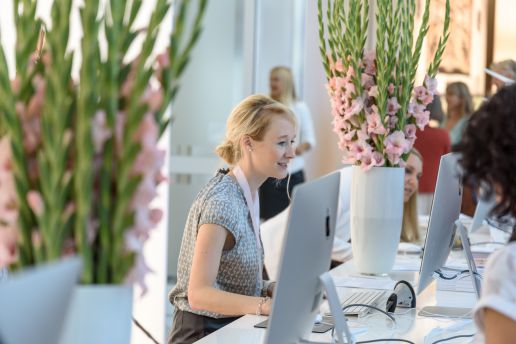
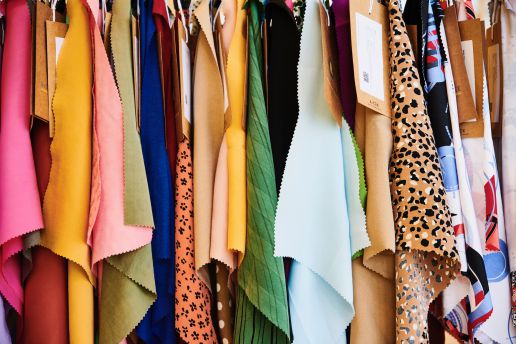
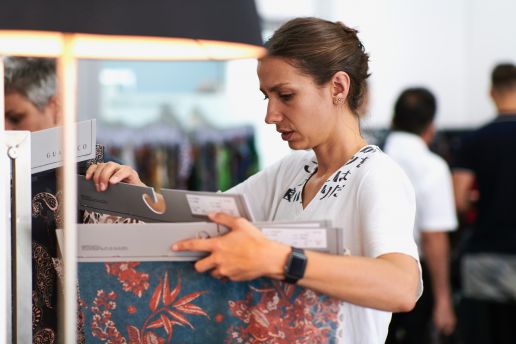
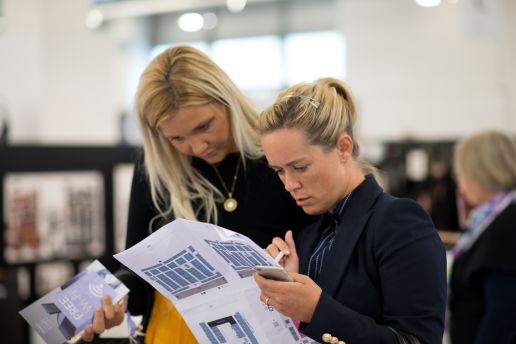
We are very motivated to organise the first textile trade fair after lockdown as we enter the final stages of organisation. FABRIC DAYS will present a select portfolio of around 700 collections presented by 300 significant German and European exhibitors. Novelties for Autumn.Winter 21/22 are presented across 5 sections: Fabrics, Additionals, Denim & Sportswear, Innovations and Sourcing.
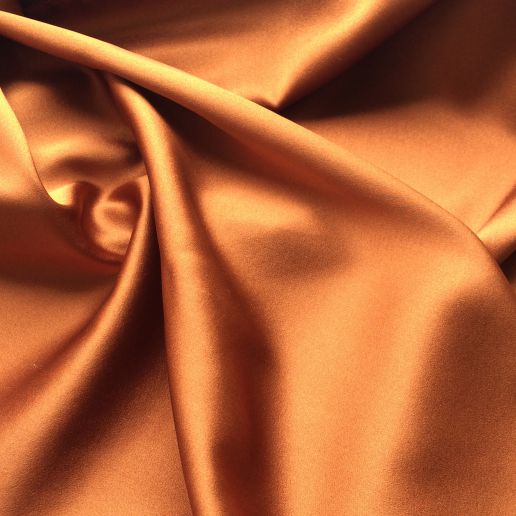
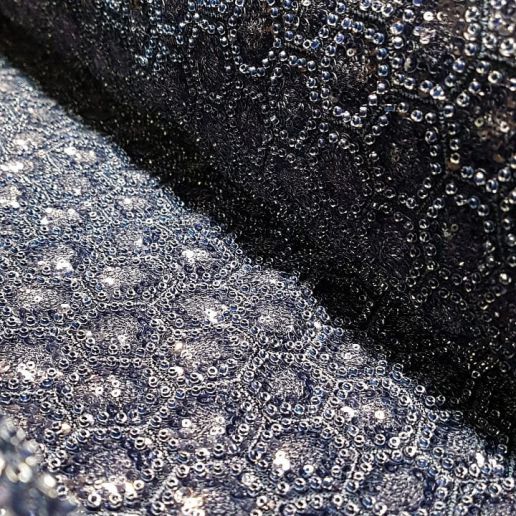
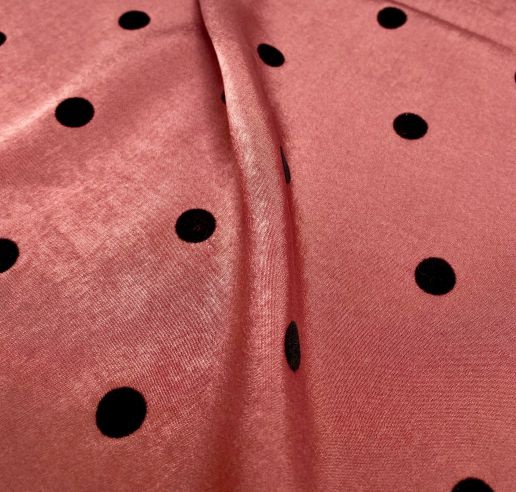
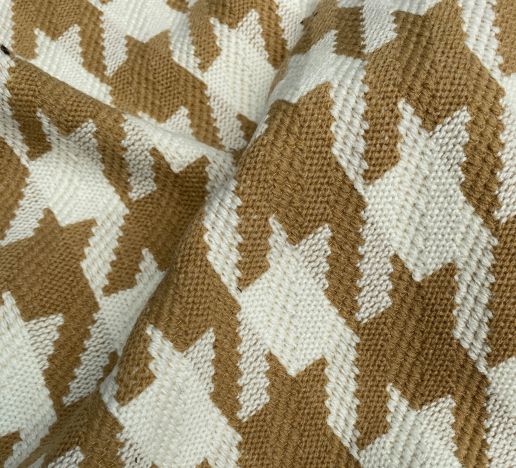
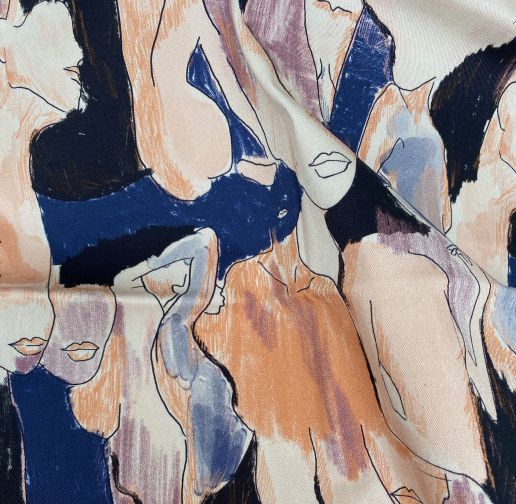
Autumn.Winter 21/22 novelties from (f.l.t.r.): Pongees, Leadford & Logan, Ercea International, E. Miroglio, Bitzer u. Single
Most of the participating manufacturers at FABRIC DAYS are our established partners with sometimes decades of experience exhibiting at our MUNICH FABRIC START shows. But we also have some very exciting “new entries” this season like Vialaton Martin & Fils in the Fabrics area, Bartateks Tekstil in the Denim area, Smartfiber AG at Innovations and Le Studio Copenhagen in our Design Studios area. We are very thankful for the trust the industry has in us – be it manufacturers who have supported us over the years or exhibitors who are brave enough to participate the first time during these challenging times.
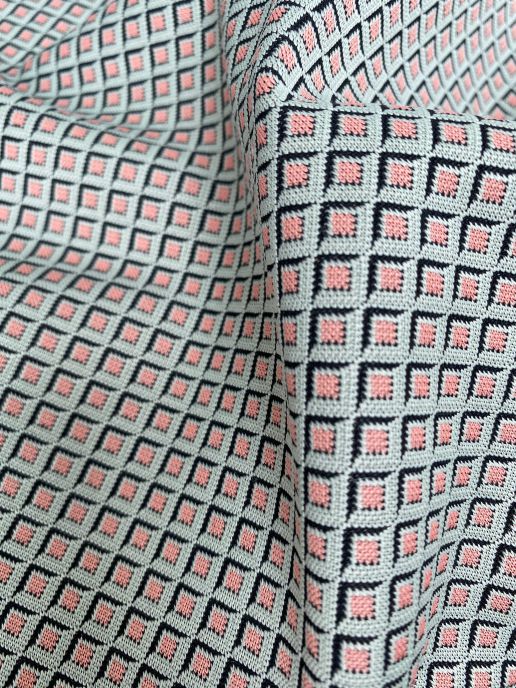
Pontetorto
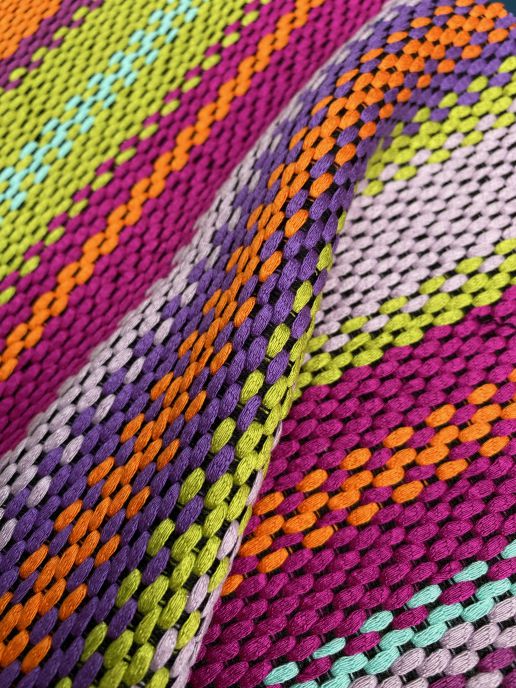
La fille
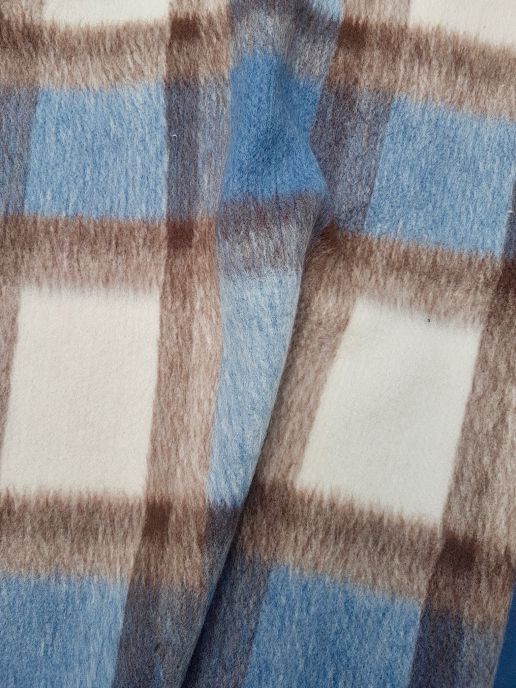
Furpile Idea

Free Time, Zoeppritex
Plan your trade fair visit now by browsing all exhibitors and get an overview of the offer in our BRAND SEARCH.
Now also available for FABRIC DAYS, you can also get additional information about exhibitors and the trade fair via our official MUNICH FABRIC START TRADE FAIR APP – available for download in all App Stores. The app launched in 2019 offers the chance to plan your visit before the show and collect exhibitor information during as well as after the fair.
Please be sure that we are well aware of the great responsibility and challenge that comes with organising an event in the current times. We have implemented extensive measures and hygiene rules, which go beyond local and international requirements, in order to minimize the risk of infection on site.
The entire planning and layout of the fair areas is designed to prevent crowding while considering the valid hygiene and safety measures. We have limited the exhibition space to the easily accessible halls 1 – 4 on the ground floor of the MOC with corresponding aisle widths throughout as well as defined entrance and exit areas. All necessary precautions are taken to ensure the minimum distance of 1.5m can be maintained at all times. We have also switched to purely digital ticketing with controlled access points by only trade professionals in order to minimise contact.
You can find our Hygiene and Safety FAQ as well as regular Covid-19 updates via the FABRIC DAYS homepage before the show as well as on site via suitable media and specially trained personnel.
Our tip: Arrange appointments with your most important partners now in advance and divide your team in the best possible way – then, alongside the measures taken regarding infection protection, there is nothing standing in the way of a safe and relaxed visit to the fair.
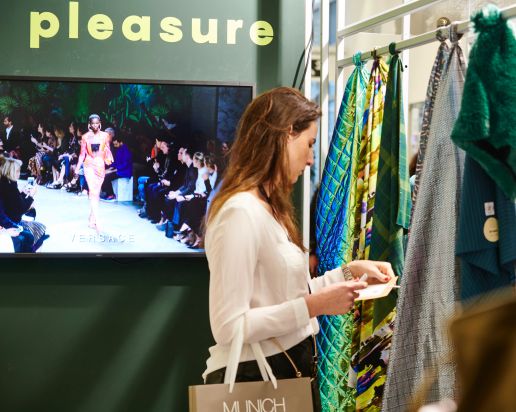
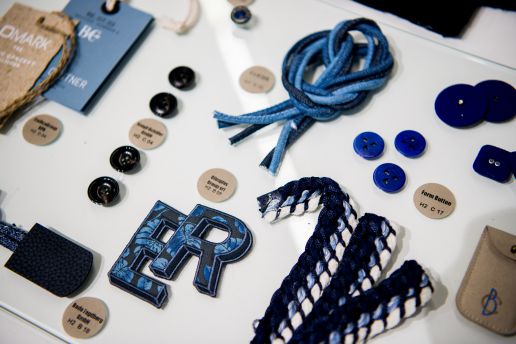
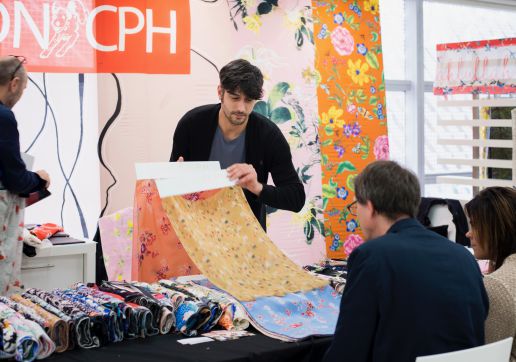
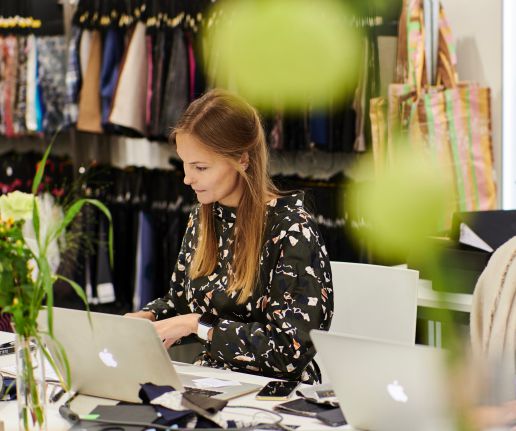
In addition to the select exhibitor portfolio, we were able to organise an informative trend forum under the seasonal title HOPETIMISM at FABRIC DAYS. You will have the chance to get an insight into the trend themes and be inspired for your collection design and order planning. As well as the in-depth descriptions of each of our seasonal trend themes, the trend forum also includes relevant fabrics from our exhibiting manufacturers. Detailed insights into our trend themes, their influences and seasonal colours can also be found in our TREND FORECAST for Autumn.Winter 21/22 – now available for sale.
What’s left is to organize your arrival and your stay in Munich. We are also having some tips for you about these topics – have a look at our DIRECTIONS & PARKING and our HOTEL RECOMMENDATIONS. We can’t wait to see you at FABRIC DAYS!
FABRIC DAYS AUTUMN.WINTER 21/22
OPENING HOURS
1 SEPTEMBER 2020 · 9.30 AM – 6.30 PM
2 SEPTEMBER 2020 · 9.30 AM – 6.30 PM
3 SEPTEMBER 2020 · 9.30 AM – 4.00 PM
LOCATION
MOC Munich | Halls 1 – 4 Ground floor
Lilienthalallee 40
D – 80939 Munich
SUSTAINABLE INNOVATIONS, Big Changes & New Challenges
An interview with SUSTAINABLE INNOVATIONS curator Simon Angel – the Dutchman who is always on the search for interesting young designers, outstanding innovations and the latest novelties in the textile world. You will find Simon and the four SUSTAINABLE INNOVATIONS he chose this season in the foyer of hall 4 at FABRIC DAYS.
- Simon, what new innovations can we expect this season?
Rethinking old traditions and adding a contemporary note to them can create innovation – sometimes you don’t have to come up with something entirely new to be innovative. This edition ‘the new thing’ is referring to something old like weaving, repairing and recycling. For example, weaving with solar-panels from Pauline van Dongen, repairing as value-creation from Studio Mend or value adding applications by Auxetics and industry ready, recycled bioplastic fabrics by Studio YouYang. All these projects use traditional crafts and materials, but in a new and innovative way.
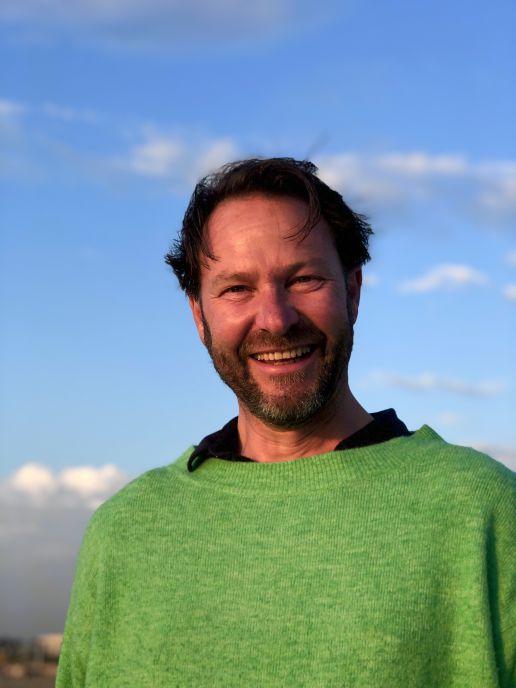
2. In 2020, the Corona pandemic brought the world to an unscheduled stop. But the crisis has also sped up the movement towards a more sustainable lifestyle. How will this shape innovation?
As you know, I’m an optimist. This year’s developments actually encouraged change. How you look at things makes a big difference in order to get yourself in the right inspired mode. Pandemics or heatwaves are nature’s way of confronting us. Just like we are experiencing changes in our environment, the nature experienced changed by humans for years and is now responding to us. All this is leading us to a dialogue with nature – a much needed one. Bit by bit we realise we exist as part of nature. Designers, scientists, the industry and consumers change their habits and question old methods. Finally, most of us start to realise what is necessary to ultimately save our world. We can only achieve that, when we are searching to find the balance with ourselves and with nature.
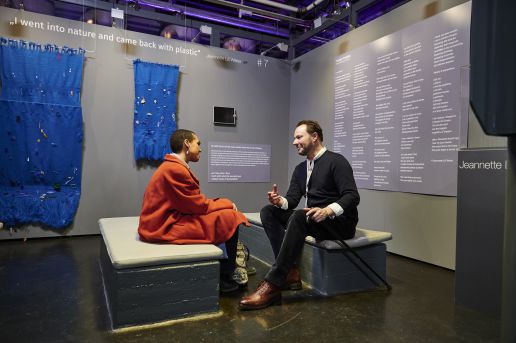
- It is the sixth time that you are curating the SUSTAINABLE INNOVATIONS. How has this year’s edition been different?
The responses to sustainable innovations are new. The dialogue is getting serious. For example, have a look at the location of the Sustainable Innovations forum this year: It has moved from the Keyhouse to the main hall, right in the heart of the industry. Right at the spot where the big changes happen.
- This year’s innovations are all about the material: textiles created out of biowaste fabrics, adapting its shape to the environment – can you give us a glimpse into the material of the future?
With the Sustainable Innovation forum, we present the near future and showcase what already is possible. As you can see, this future finds its inspiration in old traditions, crafts and resources. But what comes after that? It is hard to predict as the world is losing its linearity as we know it. More and more, we are moving towards an era of adhocracy. Transferring this into the material and textile world: design and shapes will not be the main focus of designers anymore. Materiality and comfort will experience a comeback – and we will have to redefine the product development process and all that entails. We have to open our minds and let go of expectations. We have to source from our universal knowledge to create something that in this form has never been there before.
- How can we see the current situation as an opportunity to innovate, rather than for all the challenges it presents?
This situation shows on a holistic level, that humans have to develop themselves and challenge the Status quo. Enjoy the experience as it opens up new horizons which we could never have dreamt of. Look at the Munich Fabric Start, with the Fabric Days they showed how to deal with unforeseen obstacles and ever changing circumstances – a pretty good demonstration of a future recipe for attitude, mental shift and permanent dialogue. So yes, let’s see every day as a chance for a better tomorrow.
Learn more about Simon’s sustainable novelties for the season Autumn.Winter 21/22 during the three days of FABRIC DAYS from 1 – 3 September 2020 at MOC Munich.
FABRIC DAYS AUTUMN.WINTER 21/22
OPENING HOURS
1 SEPTEMBER 2020 · 9.30 AM – 6.30 PM
2 SEPTEMBER 2020 · 9.30 AM – 6.30 PM
3 SEPTEMBER 2020 · 9.30 AM – 4.00 PM
LOCATION
MOC Munich | Halls 1 – 4 Ground Floor
Lilienthalallee 40
D – 80939 Munich
Disruption and Transformation in the Textile Value Chain
In the February edition of MUNICH FABRIC START, KEYHOUSE hosted an expert led panel discussion, merging their collective knowledge and experience under the topic, ‘Future Textile Supply Chain – Disruption and transformation through sustainability and networking in the textile value chain’. Moderated by Jana Kern & Alex Vogt of KERN.Consulting with Prof. Dr. Michael Braungart (Braungart EPEA), David Shah (View Publications), Hans H. Jung (Unity AG) and Dr. David Schmelzeisen (RWTH Aachen).
The fashion industry is currently facing unprecedented challenges as a result of COVID-19, especially critical are those concerning the global supply chain. Change is accelerated during these times and it has become crucially important to share our collective knowledge and expertise in order to develop positive, future proof solutions. On the KEYHOUSE stage, our industry experts exchanged their thoughts and expertise, offering their unique insights and key points for further action and reflection.
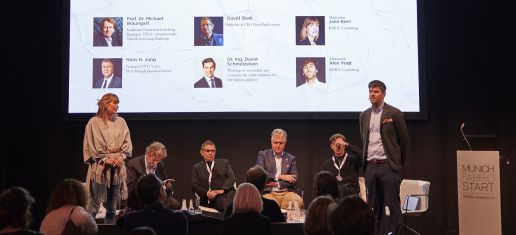
How attractive has the option of localisation become to companies?
While local production may look like an attractive alternative that could perhaps satisfy a growing standard of consciousness and need to keep up with demand, it is problematic because companies will always seek out the cheapest option, said David Shah as he offered a further insight:
“Turkey will become the new ‘China’ to Europe, just as Mexico will become the new ‘China’ for America.”
On the one hand, there are the typical pressures demanded from the point of view of the manufacturer which will always exists, such as; speed, price, product diversity, range and lifespan, speed of delivery as well as waste reduction. However on the other hand there is now a need to satisfy the consumer demand for those who are seeking a more meaningful experience, individuality and faster to market which is almost counterintuitive.
To what extent will consumer demand for sustainable manufacturing shape current business practices?
While fashion movements, professionals and activists advocate for greater transparency and traceability which can ideally change this damaging mind-set mentioned previously, panellist David Schmelzeisen believes it is still the case that the majority of end consumers want faster change times but at the same time lower prices. He believes that the controlling power does not yet lie with the conscious consumer, adding:
“We need to be more flexible and that is where digital technology comes in and why we will see a lot of changes in the future. For this we need smaller MOQ’s (Minimum Order Quantities) which is leading producers to look for new digital and technical solutions as well as new design solutions.”
How can digitisation provide a solution for more accurate production quantities?
Digitisation is transforming the entire supply chain, the connection between production and actual customer demand is getting closer. Hans Jung believes digital tools offer the unique opportunity to learn what the customer wants, such as with customer interface throughout all the different stages of usage, acting as a systematic feedback loop for optimisation. He states
“Production industries are now evolving and adding additional functions in a much more sustainable way than in the past.”
How crucial is the practice of circularity for the textiles industry in the future?
Circularity is crucial to the future of our industry and it should be explored as there is a lot of opportunity to build on this kind of system within the textile industry. Michael Braungart strongly believes the future lies in opening up the circular processes and materials which conventionally may be contained to only the textile industry. As these may have other relevant applications in production industries across various stages of the process and thus increasing the effectiveness of circularity. He also shared his crucial opinion that where brands use smart textiles, there must be an equally smart effort to communicate with the consumer. It is important to educate the consumer on how to use the product better for circularity to truly be in effect.
Want to know more? Watch the full discussion now available on our YouTube channel.
Ecosim – BLUEZONE Presents Denim Beyond the Seasons
ECOISM
Reject egoism, create ecoism, rewrite your future.
Our world needs to spare a thought… consumption, mass production, benefits and our ecosystems. ECOISM thrives on our need for a better world, for true sustainable solutions and the rethinking/overhaul of our industrial blue planet.
In a denim world moving at social media speed, denim trends are key to benefit end consumers and the industry with a clear direction. The BLUEZONE trend direction is split into two main categories to reflect our present and our future: themes which directly address fabric and product development, such as NO STRETCH or BLUE WELLNESS. And themes which tackle the important trending styles in our world, such as POWER DRESSING and ANTI BEAUTY.
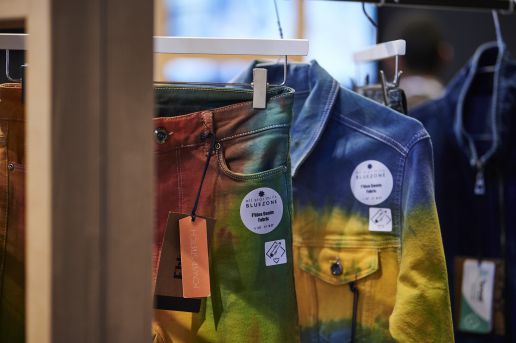
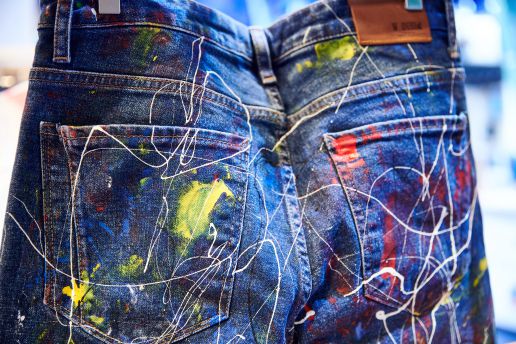
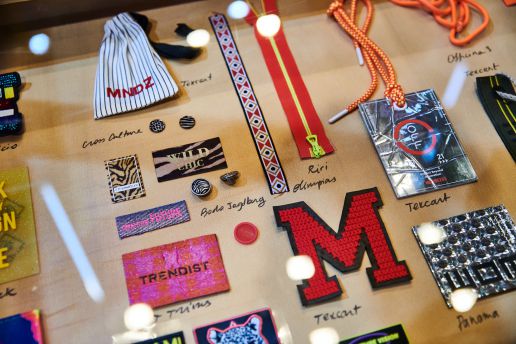
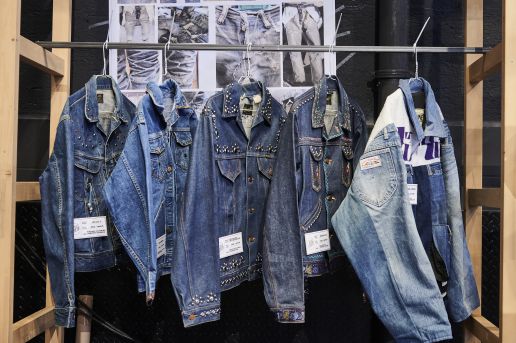
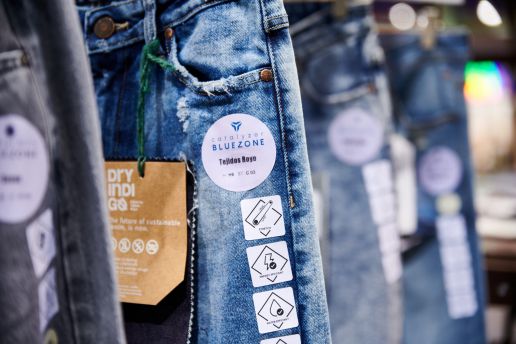
SHARING becomes more than a simple theme, it is the space where business becomes altruistic, where growth rhymes with sharing profit: A different way of conceiving denim in our modern world. “Sustainability is not a trend, but every trend should be sustainable.”
The following trend directions develop under the main topic ECOISM:
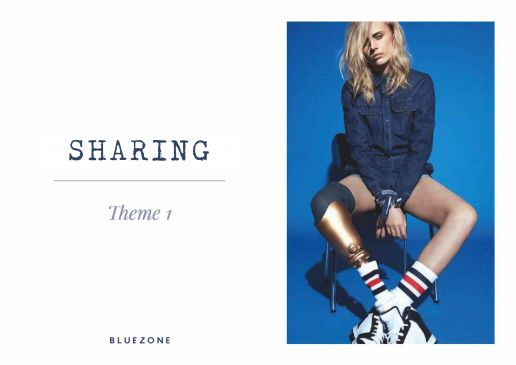
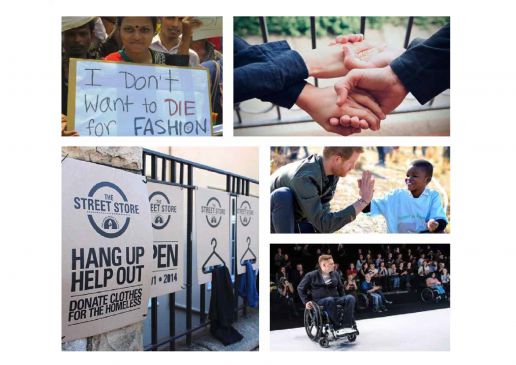
SHARING
Altruistic manufacturing, altruistic products, brand initiatives. Think: Products made in collaboration with people in need, small associations, handicapped. Products in which the benefits go to those in need.
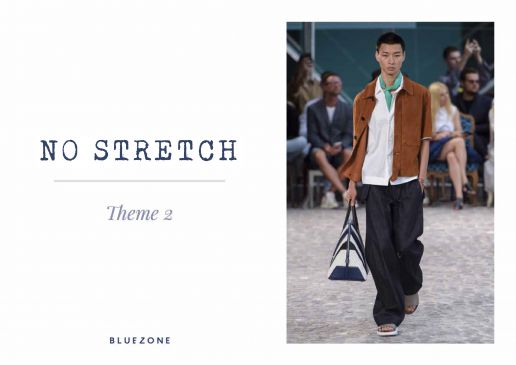
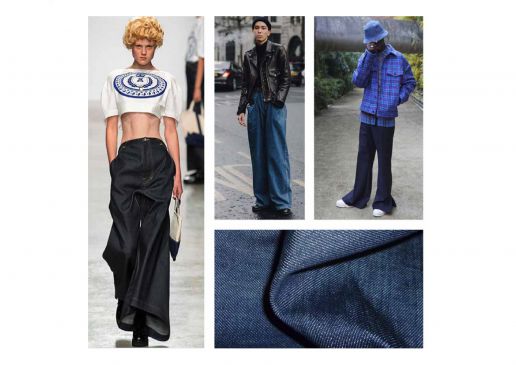
NO STRETCH
Novelties without stretch…male & female, gender neutral. Think: Wider fits are their way to becoming mainstream and need a new generation of more rigid, more compact fabrics. Trend looks are more relevant with crisp somewhat rigid denim. Surfaces might be soft but compact weaving is key.
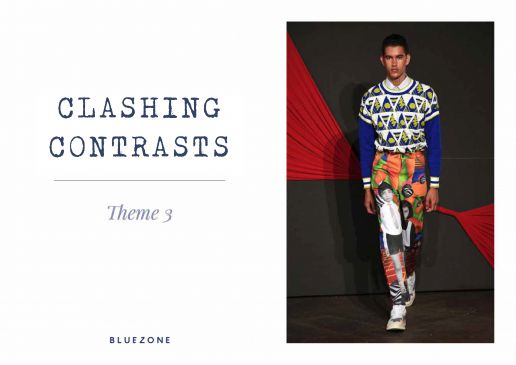
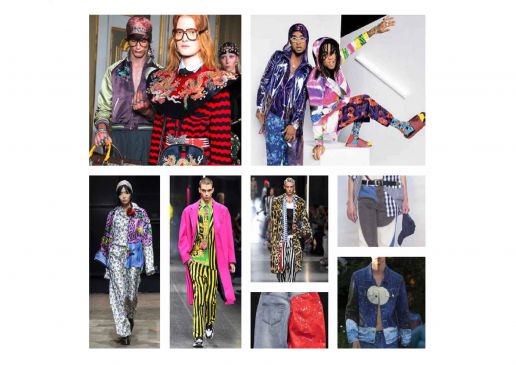
CLASHING CONTRASTS
A revolution in taste is key. Printed denim, coloured denim, and striped denim. Think: Jacquards, fancy weaves in unusual patchworks, layers, colour blockings. Strange visual matches, creating the antidote to harmony.
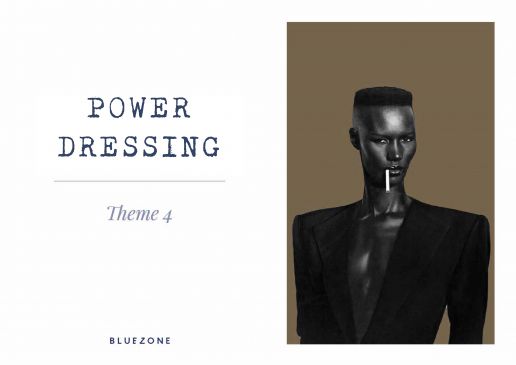
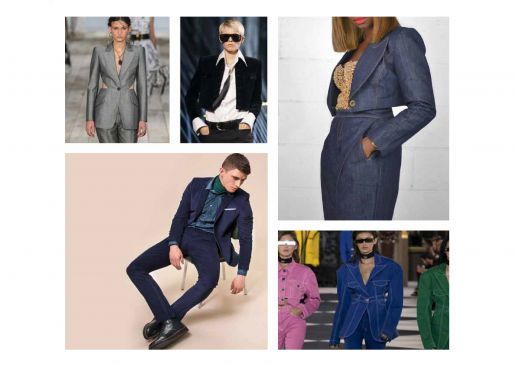
POWER DRESSING
Power dressing for a tough future. When politics go wrong, power dressing strikes back. Think: Business denim with a stylish twist. Power dressing also for men.
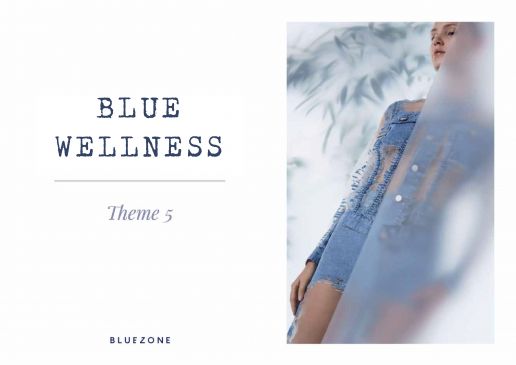
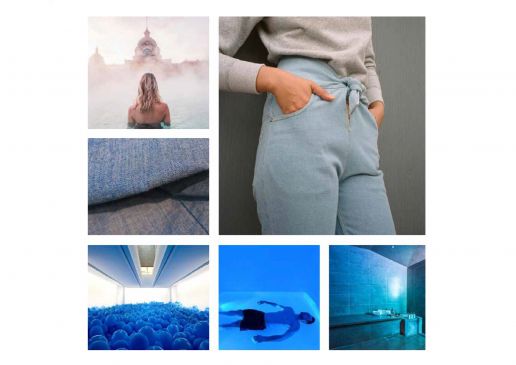
BLUE WELLNESS
The need for a soothing denim product. Denim that takes care of your skin, brain & body. Think: Fibers, coatings, ingredients, softness, anything that makes you and your body feel better.
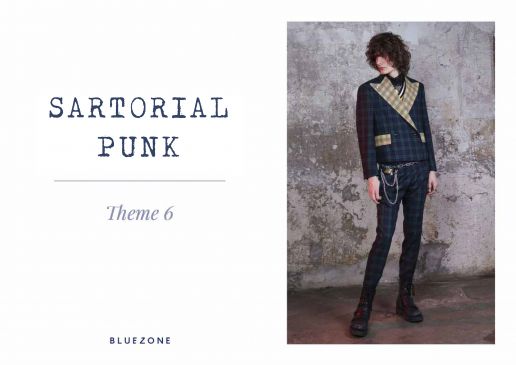
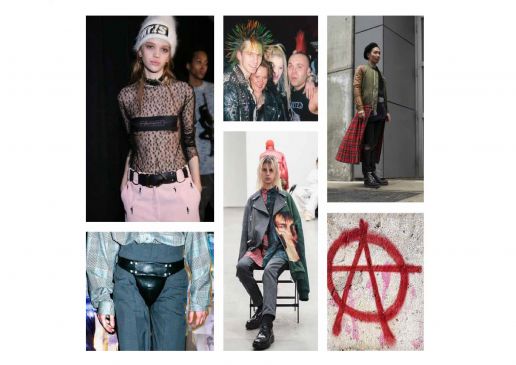
SARTORIAL PUNK
No future. Sartorial denim against Friday wear. A punk attitude with elegant codes. Think: Bleached and spotted denim. Black, grey, white denim, stretch and rigid fabrications.

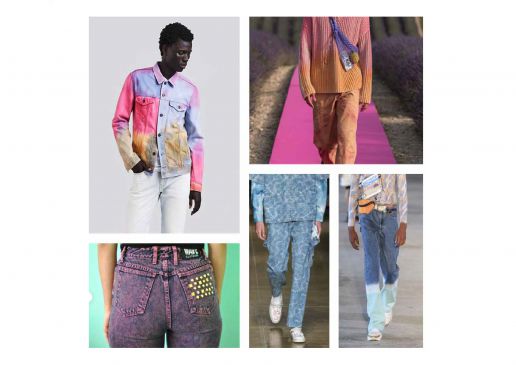
ACID PASTELS
The key is subtly in the effects. Acid fade-outs. Gritty yet pastel tenderness. Flowers, flowers, flowers … &animals, prints and solids. Think Acid effects on denim are key and tend to stay for some time. What is the next generation of acid and pastel effects on denim …
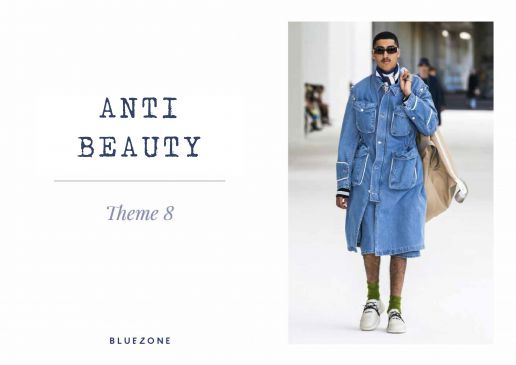
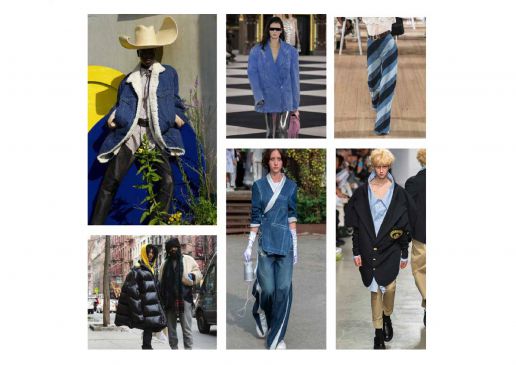
ANTI BEAUTY
Strange is the new beauty. Strange denim, strange products. New aesthetics, new proportions, sartorial, oversized, asymmetrical. Think: Flat-finished denim, reactive dye denim, Indigo denim.
